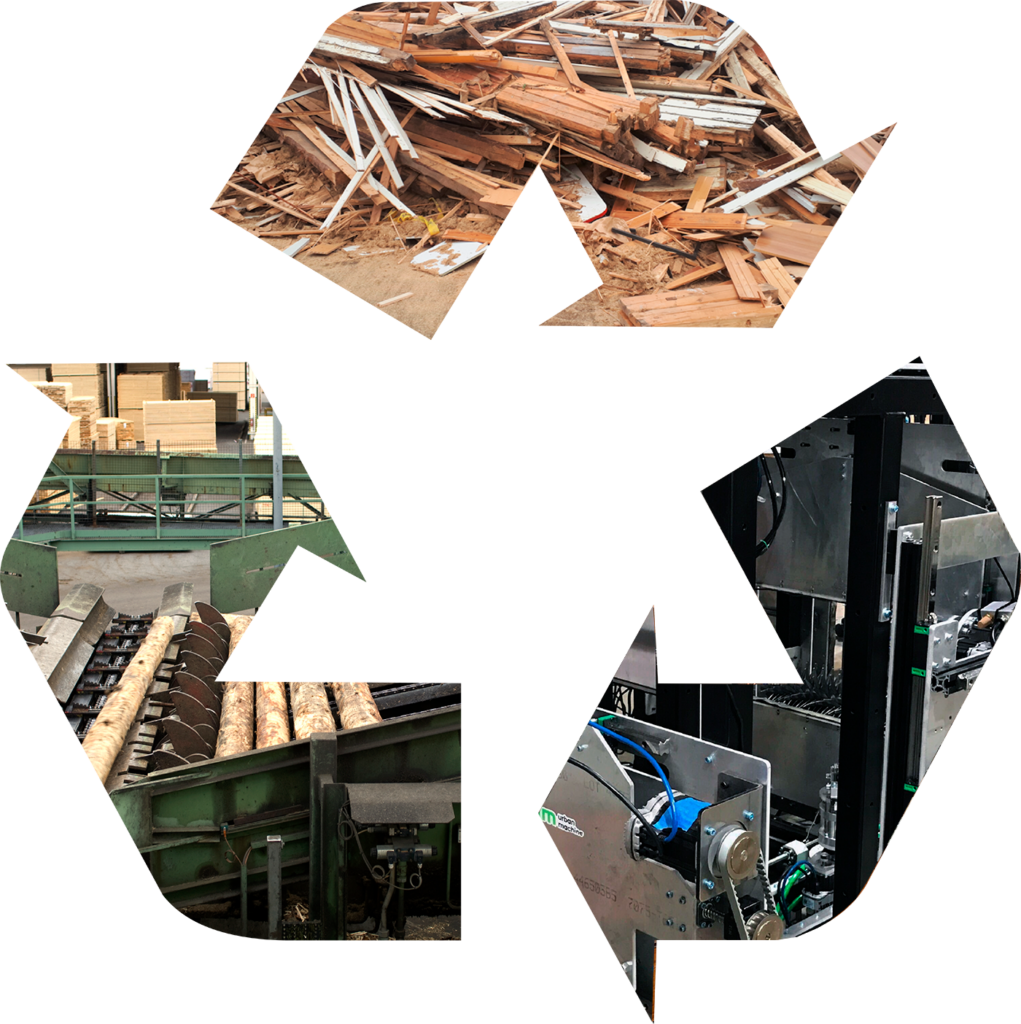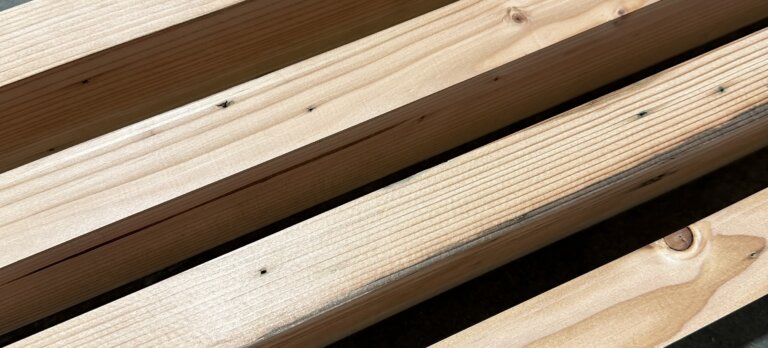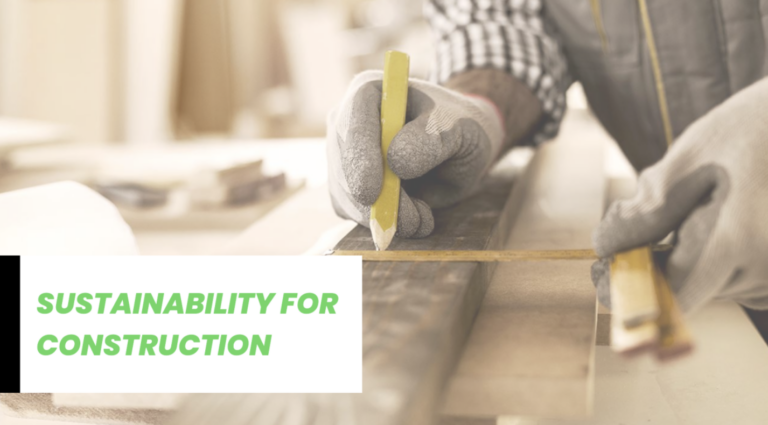
Lumber was one of the first industries in the United States and still continues to play an important role today. Beginning with the colonization in North America to the peak of lumber extraction in the 20th century, lumber continues to shape our society. Today’s efforts aim to balance timber extraction with conservation and reforestation.
Urban Machine is “salvaging the past to build the future” with the purpose of reducing the need for virgin timber. Our approach involves utilizing the established urban landscape to extract valuable resources from age-old buildings, contributing to the preservation and sustainability of urban environments.
Bits of Lumber in US History
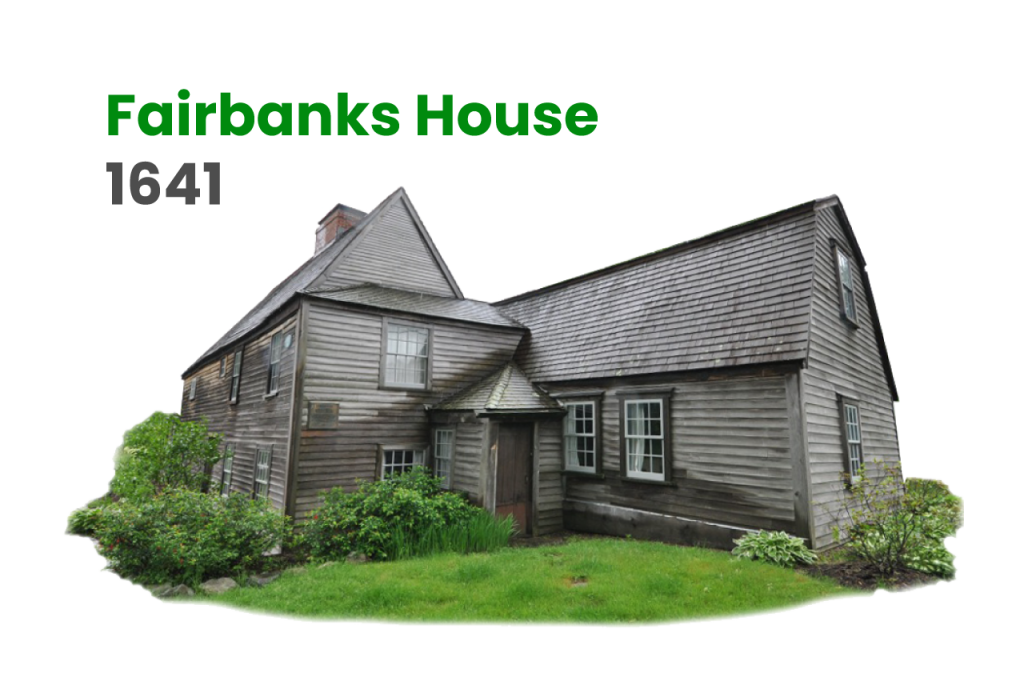
The vast forests that covered North America provided an abundant source of timber which was used for a wide range of purposes including construction, shipbuilding, and fuel. Arguably, lumber represented the first industry in the Thirteen Colonies. Some of its history is preserved in the wood of buildings that remain to this day.
One of the surviving buildings from the 17th century was the home of Jonathan Fairbanks who came from Heptonstall in the West Riding of Yorkshire, England. In about 1636, Fairbanks acquired land and settled in Dedham, Massachusetts where he built the house on his land.
The house is likely the oldest dwelling house in New England and the oldest surviving timber-frame structure in North America.
Marietta, established in 1788 by pioneers hailing from New England and affiliated with the Ohio Company of Associates, stands as a prominent example of early settlements. Marietta marked the beginning of a series of New England colonies within the Northwest Territory of the time.
After the American Revolutionary War, the U.S. sold or granted large tracts of land to stimulate expansion. The new Northwest settlements in the frontier increased the demand for lumber.

Loss of forested land
However, these developments came at a cost to the forests in the United States. According to forest experts, it is estimated that in 1630, over 1.02 billion acres of land in the US were covered by forests, accounting for approximately half of the total land area. However, by 1910, the extent of forested land had significantly decreased to around 721 million acres. This widespread deforestation had profound effects, including the endangerment and extinction of various animal species and other far-reaching consequences with long-term implications.
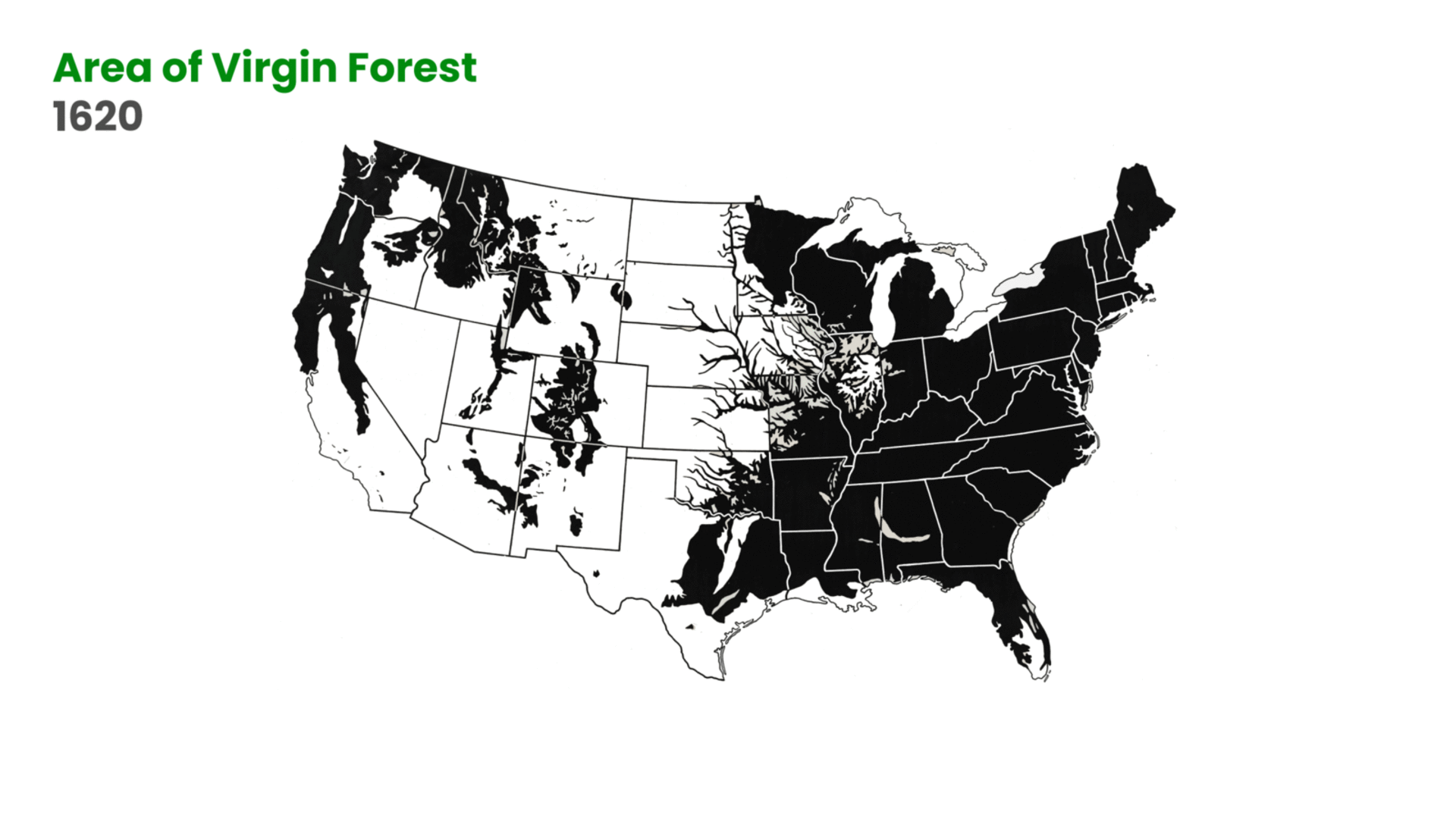

The new railroad industry accounted for a fourth of the national lumber demand and required lumber to build railcars and stations while powering trains.
Even as coal began to replace wood as an energy source, the coal mining industry itself needed lumber to support its structures and create rail beds. New methods of transporting lumber, like the steam engine, provided the means to log further inland and away from water.
New machines such as the circular saw and the band saw allowed forests to be felled with significantly improved efficiency.
In 1950, the United States began producing 38 billion board feet of lumber fairly constantly.
One reason for the demand increase in lumber was the post-war development of the suburbs across the United States – which continued to develop during the Baby Boom.
One of the first suburbs was Levittown, New York, made up of timber-frame houses of pre-cut lumber on concrete slabs. These houses were cheap and easy to build; by July 1948, 30 houses were built each day.

Lumber Production in the US
1840-2020

Make it Circular
While a large part of the built environment is based on lumber, a significant portion of it is aging and will require deconstruction. This presents an opportunity to reclaim the lumber, giving it a new life while preserving its history.
In reclaiming wood, not only does using Urban Machine’s robot reduce environmental impact and create new ways to preserve history, but it also reduces the costs associated with building material waste.
By implementing a circular economy into the design of products and buildings, sustainable architects transform waste into resources and create new industry networks with value. This dynamic opens new doors to understanding design, aesthetics, heritage, and new economic opportunities.
